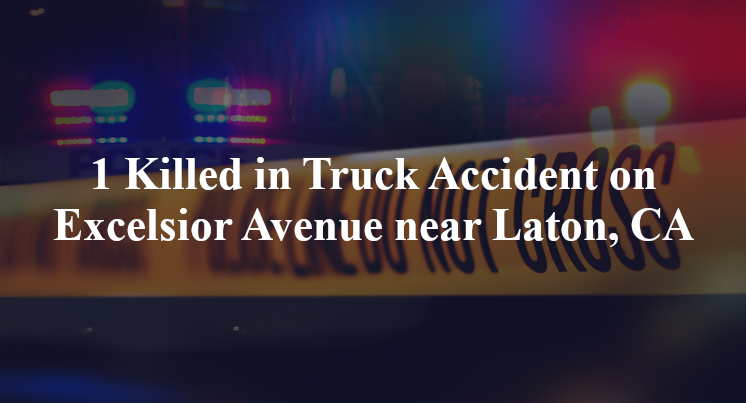1 Killed in Truck Accident on Excelsior Avenue near Laton, CA
Fresno County, CA — September 2, 2025, one person was killed in a truck accident at about 11 a.m. on East Excelsior Avenue southwest of Laton.
Authorities said an eastbound semi-truck collided with a Toyota Camry that was heading south on Cedar Street, causing the smaller vehicle to flip several times. The truck went off the road and knocked down a utility pole.

The Toyota driver, whose name has not been made public yet, was pronounced dead at the scene of the crash, according to authorities.
The truck driver was taken to a local hospital for treatment of minor injuries, authorities said.
Authorities have not released any additional information about the Fresno County crash at this time. The accident is still under investigation.
Commentary by Attorney Michael Grossman
When someone reads that a semi-truck collided with a car at an intersection, flipping the smaller vehicle and killing its driver, the natural question is: How did this happen? It sounds like one vehicle failed to yield, but that alone doesn’t tell us much. Was the truck driver at fault? Did the Toyota run a stop sign? Did one of them blow through a red light? We don’t know yet, and that’s exactly why a full investigation matters.
From what’s been reported so far, we know the semi-truck was eastbound on Excelsior Avenue and the Camry was southbound on Cedar. But the intersection dynamics aren’t explained. We don’t know if there were stop signs or traffic lights, or if either driver had the right of way. That’s a major gap in understanding what actually occurred. Without that context, there’s no way to make sense of the crash.
One thing I always look at in these cases is what the physical evidence can tell us. Did the truck’s engine control module (its black box) record any last-minute braking or swerving? Was the driver going too fast for conditions? Did in-cab cameras capture what the driver was doing before impact? Cell phone records are another key piece of the puzzle. These are the kinds of facts that separate assumption from accountability.
There’s also the question of how far the truck traveled after impact. Reports say it went off the road and knocked down a utility pole. Depending on how that played out, it could suggest excessive speed or a delayed response by the driver. Again, only hard evidence can answer that.
And then there’s the question I’ve seen overlooked too many times: Who hired the driver, and how well was he trained? I worked a case not long ago where the trucking company’s driver screening process was a joke: a 20-minute road test and zero background check. Turns out they hired someone who’d already been fired multiple times for unsafe driving. That kind of corner-cutting doesn’t show up in a police report, but it absolutely shapes what kind of driver is behind the wheel.
At the end of the day, what matters is not speculation. It’s verification. Until someone goes through the truck’s data systems, interviews witnesses and looks at the company’s hiring records, no one can say for certain who’s to blame. But that doesn’t mean we stop asking questions. It means we start asking better ones.
Key Takeaways:
- It’s unclear from public reports which driver had the right of way at the intersection.
- Evidence like black box data, dash cam footage and cell phone records will be key to understanding the crash.
- The truck’s path after the collision could shed light on its speed or the driver’s response time.
- A deeper look into the truck driver’s training and employment history may reveal larger accountability issues.
- Full answers require independent investigation, not just the initial police report.

“These are essential reads for anyone dealing with the aftermath of a truck wreck”– Attorney Cory Carlson